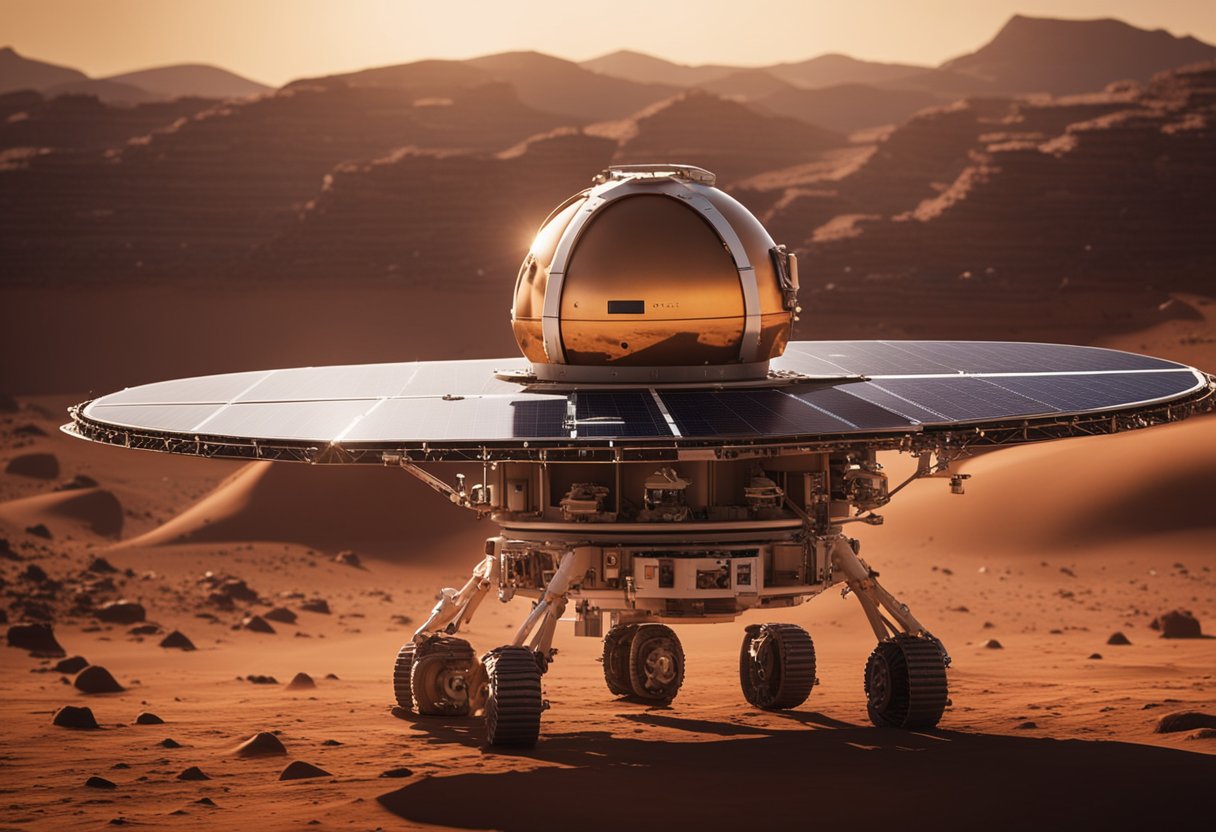
Venturing to Mars is a challenging and lengthy endeavour, requiring sophisticated technology, meticulous planning, and a deep understanding of the physics involved in long-distance space travel. On this journey spanning roughly 225 million kilometres, a spacecraft endures a multitude of factors, from the gravitational pulls of celestial bodies to the alignment of Earth and Mars. Timing is crucial, as the optimal travel windows, known as launch windows, occur only every 26 months when the two planets are favourably aligned.
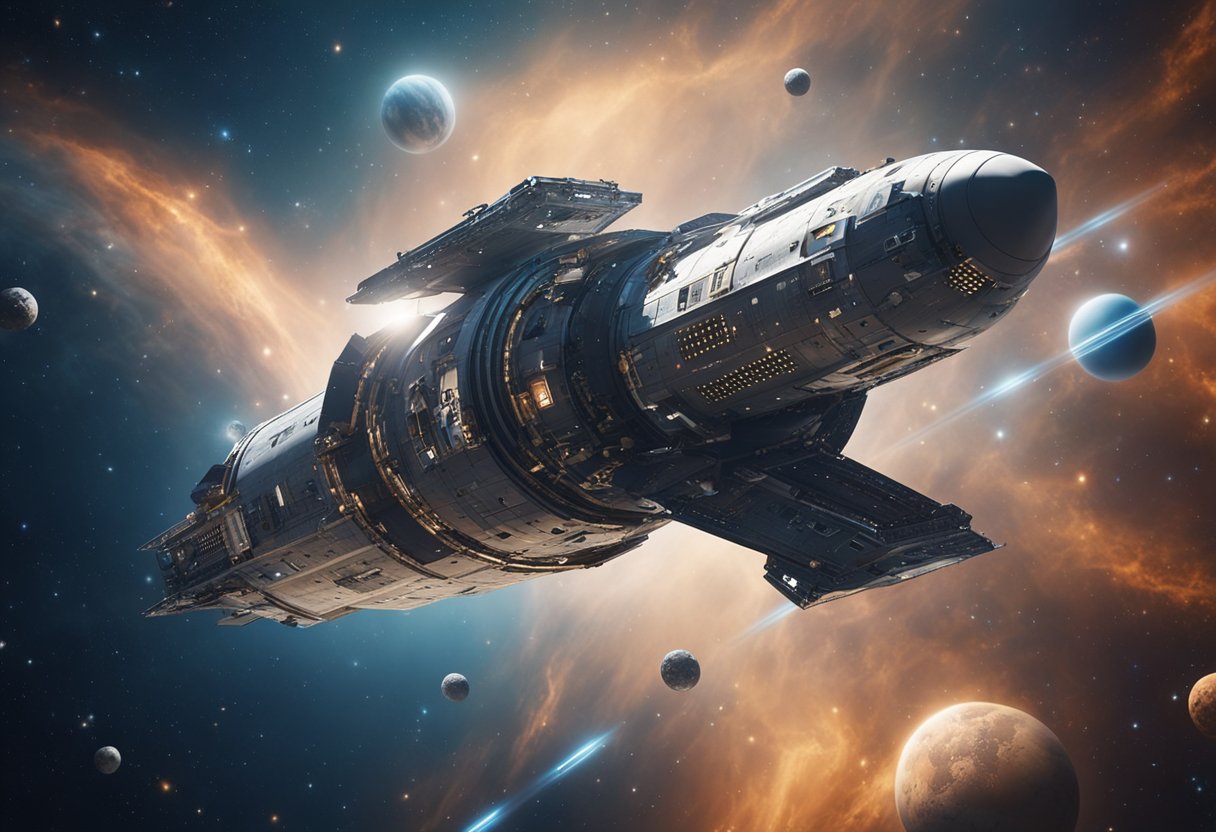
Our calculations and past missions suggest that a one-way journey to the Red Planet can vary significantly in duration, usually taking between six to nine months. This variability is dependent on the speed of the spacecraft, the specific trajectory taken, and the positions of the planets at the time of launch. The spacecraft’s propulsion technology and energy sources play a vital role in the speed and efficiency of the trip, with nuclear fission and solar power being among the options considered for ensuring a steady energy supply to the spacecraft navigating this interplanetary voyage.
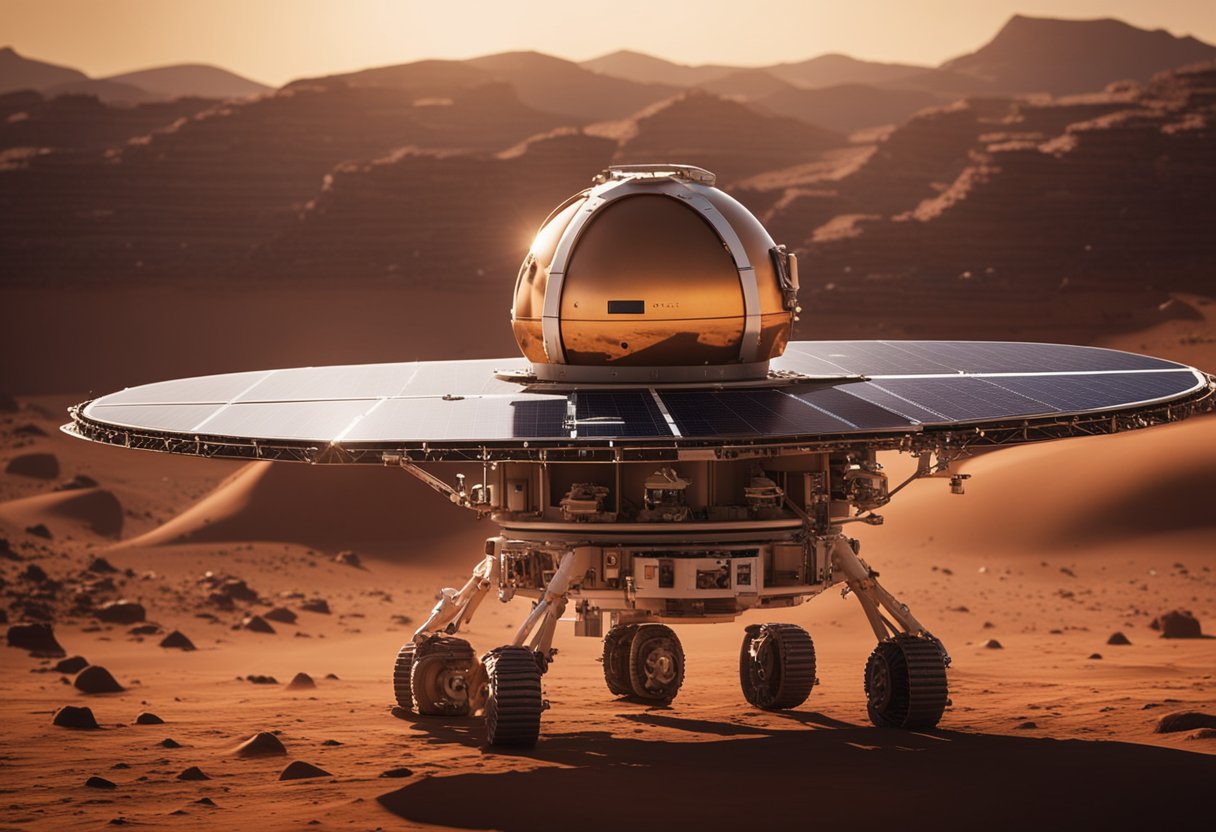
As we explore the chronicles of Martian exploration, we recall the achievements and aspirations that have propelled us from early flybys to the quest for signs of ancient life.
Our journey to Mars commenced with the trailblazing Mariner 4, which in 1965 furnished us with the first close-up photographs of the Martian surface. Following this, Mariner 7 and Mariner 9 advanced our understanding, with Mariner 9 becoming the first spacecraft to orbit another planet in 1971. This achievement marked the transition from mere flyby missions to extended observational studies, allowing our engineers to scrutinise Mars with new technologies and more sophisticated instruments.
In the vanguard of these missions, the Viking 1 and Viking 2 landers in 1975 set a precedent for future missions by searching for signs of life and returning detailed insights of the Martian soil and atmosphere. We advanced further with the Mars Reconnaissance Orbiter, which has been surveying the Red Planet since 2006, significantly enhancing our topographical data.
The indomitable Perseverance rover, with a mission to seek signs of ancient life, represents our latest feat, setting its wheels upon Martian soil in 2021. These instruments, alongside a host of landers, orbiters, and rovers, have paved the way for the technologies that could one day support human and robotic exploration alike.
Future missions are poised to unravel more of Mars’s secrets, and with budding enterprises like SpaceVoyageVentures.com, the notion of space tourism is nearing the cusp of reality—a testament to human ingenuity and the relentless pursuit of knowledge.
Travelling to Mars involves complex physics, where every aspect from speed to energy becomes critical for a successful mission. We’ll unpack the fundamental properties involved in such an interplanetary journey.
To understand our trajectory to Mars, we must first grasp the principles of orbital mechanics. These laws dictate how we manoeuvre a spacecraft from Earth’s orbit to intersect Mars’. A Hohmann transfer orbit is often employed; this is an energy-efficient method of travelling between two orbiting bodies. The Hohmann transfer involves two key points in its orbit, the periapsis, where the spacecraft is closest to Earth, and the apoapsis, where it extends out to touch Mars’ orbit. To execute this, we need precise calculations of the velocity required to launch and enter into this transfer orbit.
Transfer windows are specific times when Earth and Mars align favourably, making the trip feasible. This alignment occurs approximately every 26 months. To take advantage of this, we must calculate when Mars and Earth will be in positions that minimise the energy required for travel. This involves considering the gravitational pull of both planets and the Sun, as they influence the spacecraft’s journey through the Solar System. The speed of a Mars-bound spacecraft is approximately 24,600 mph (~39,600 kph) after leaving Earth’s orbit, with the entire trip spanning a distance that can exceed 300 million miles (480 million kilometres), which is well over an astronomical unit, the standard measure of distance within our Solar System. The speed of light is not a constraint in current propulsion methods, but advancements in technology, such as the theoretical photonic propulsion, could revolutionise these parameters. During close approaches, when Mars and Earth are nearest to each other, the required travel distance is decreased, making it the most optimal time for launch.
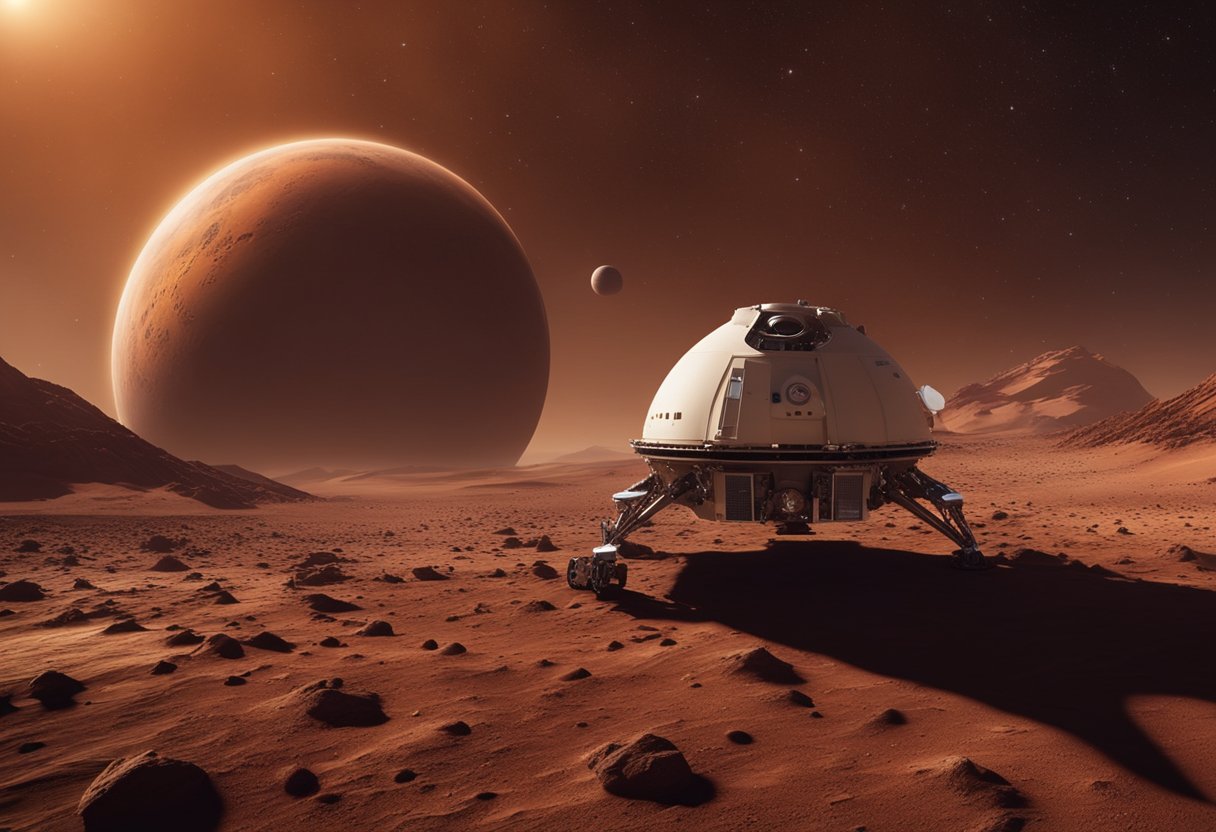
As we examine the journey to Mars, it’s crucial to understand its orbit around the Sun and the environmental conditions present. Mars completes an orbit every 687 Earth days, indicating a longer Martian year, and has seasons due to its 25.19-degree axial tilt.
Mars’ atmosphere is vastly different from Earth’s, being thin and composed primarily of carbon dioxide. Average temperatures on the Martian surface can vary greatly, with a maximum of about 20°C at the equator during midday, to a minimum of below -125°C near the poles during winter. Despite its thin atmosphere, Mars experiences weather, including massive dust storms that can engulf the entire planet and significantly impact temperatures and visibility.
The Martian landscape is both striking and diverse, characterised by a rocky surface with the largest volcano in the solar system, Olympus Mons, and the Valles Marineris — an expansive canyon system. Evidence of water in Mars’ past is written into the surface features, including river valleys and lakebeds. Mars has two small moons, named Phobos and Deimos, which are thought to be captured asteroids. Despite being only about half the size of Earth with a diameter of 6,779 km, Mars possesses a gravity about 38% of Earth’s which, combined with its solid core, contributes to the overall geology of the planet.
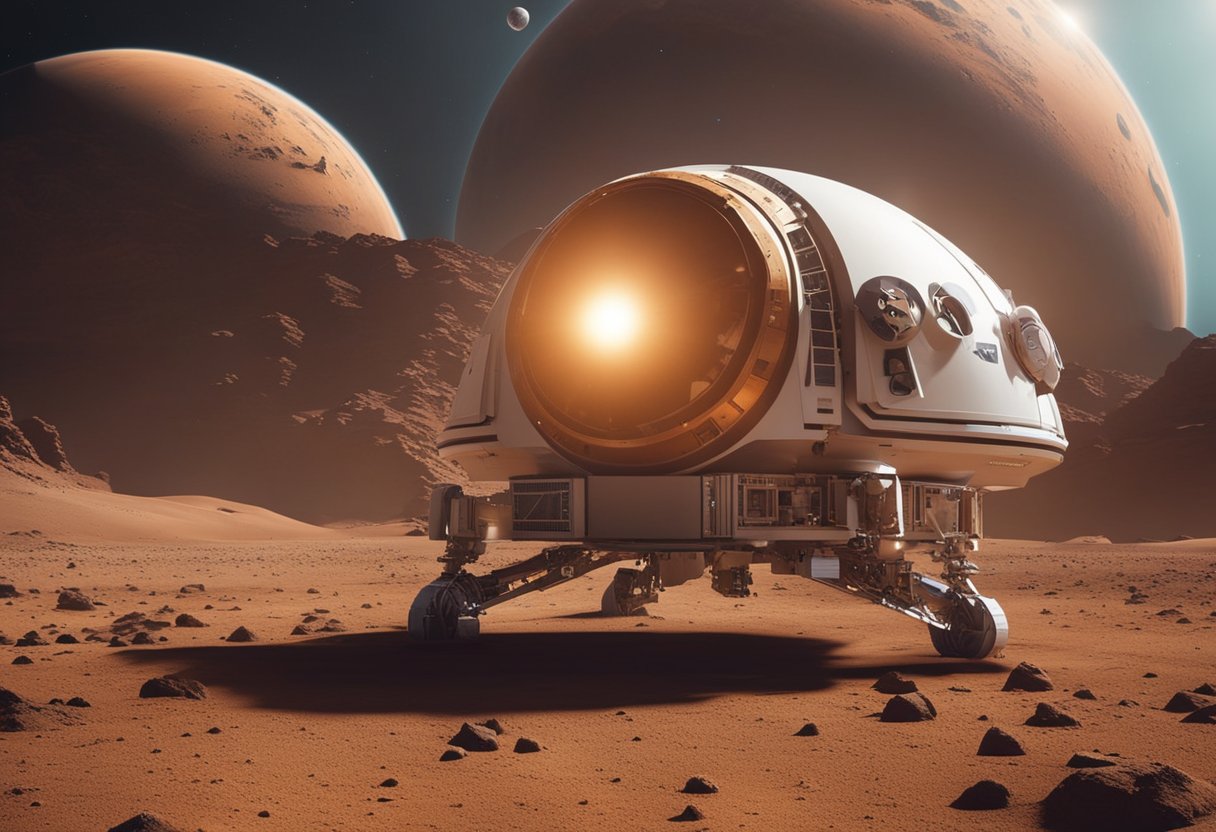
In preparations for Mars travel, we focus heavily on the development and optimisation of spacecraft and supporting technologies. These advancements are imperative to ensure that our journey to the Red Planet is feasible, efficient, and safe for all involved.
Propulsion technologies are at the heart of interplanetary travel. Our engineers are working on more powerful propulsion systems using advanced propellants, which are crucial for reducing travel time to Mars. These systems are designed to provide the significant energy required to escape Earth’s gravity and then navigate the spacecraft the approximately 140 million miles to Mars. By improving fuel efficiency and engine performance, we not only aim to shorten the trip but also enhance the safety and reliability of the mission.
Ensuring the sustainment of life in the vast expanse of space is no small feat. Our life support systems are engineered to meticulously recycle water and oxygen, creating a habitable environment for astronauts on long-duration spaceflights. Innovative technologies are being developed to manage resources more effectively, including high-efficiency systems that convert waste into usable energy and nutrients. Maintaining a stable life support system is essential for the success of our Mars missions and ensures the well-being of the crew.
As we prepare for the monumental task of sending humans to Mars, it is crucial to understand the significant risks and challenges that such a journey presents. Our technological advancements have provided us with a path, but the sheer distance and unknowns of space make it an endeavour fraught with hazards that we must meticulously navigate.
One of the most critical hazards of interplanetary travel is the high level of radiation exposure. Unlike Earth, which has a protective magnetic field and atmosphere, space offers no such shield. During the journey to Mars, astronauts will be exposed to galactic cosmic rays and solar particle events that can lead to severe health risks, including cancer and acute radiation sickness.
Our current technology is being developed to mitigate these risks with shielding and medical countermeasures. However, this remains a primary concern for the safety of astronauts during their expedition.
The psychological impact of a Mars mission poses another set of challenges. Dealing with isolation, confinement, and distance from Earth for extended periods—potentially up to three years—can have significant effects on the mental health of the crew.
These factors necessitate careful psychological screening and the development of robust support systems to ensure the well-being of astronauts. Measures include comprehensive training and the simulation of long-duration missions here on Earth.
Our understanding of these risks is continuously evolving as we gather more data from ongoing research and simulations, bringing the dream of human exploration on Mars closer to becoming a reality. Our journey to the Red Planet will be one of the most significant leaps for human life—a remarkable testament to our resilience and explorative spirit.
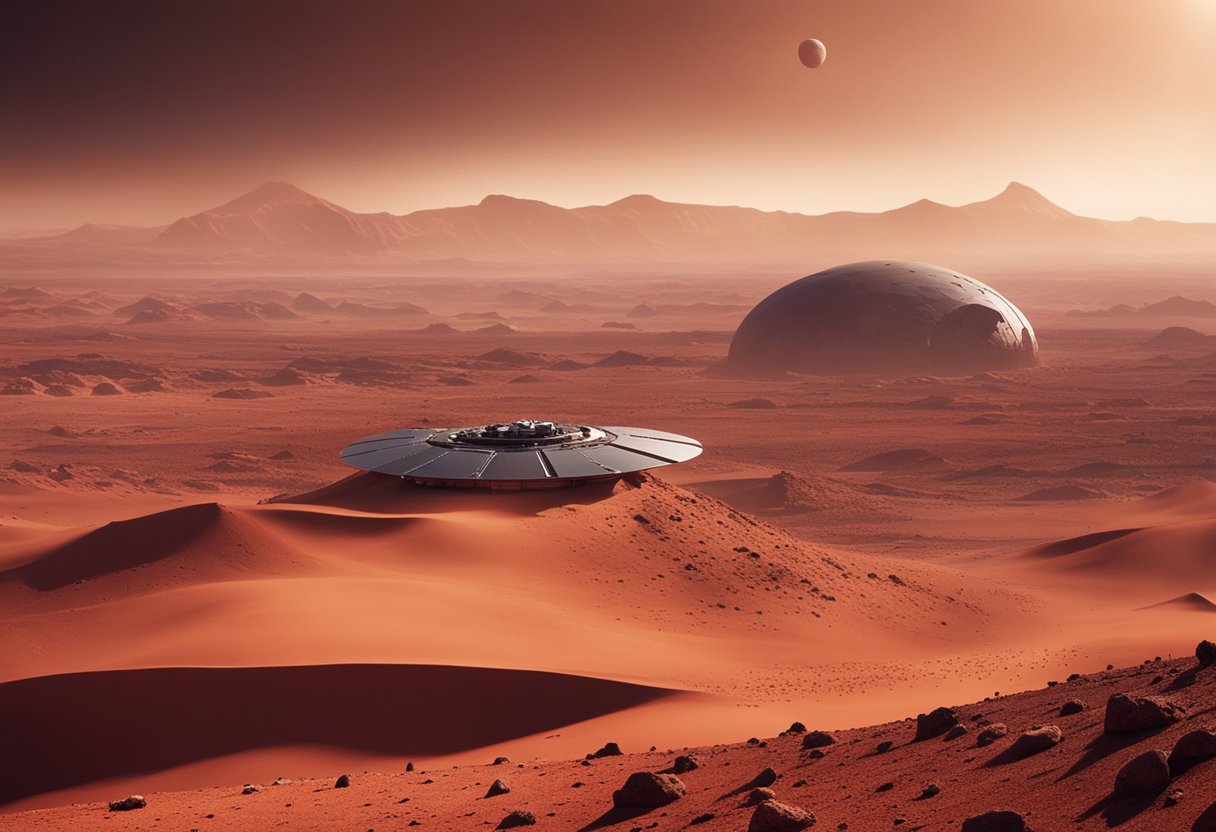
Exploration of Mars presents a tantalising glimpse into the possibility of life beyond our Earth, specifically targeting evidence of ancient life and assessing the planet’s suitability for future human habitation.
We understand that Mars holds significant scientific interest due to indications that it once harboured liquid water, a crucial ingredient for life as we know it. Robotic missions, such as NASA’s Perseverance rover, are equipped to scrutinise sediments for biomarkers of ancient life. These missions aim to uncover signs that, billion of years ago when water was abundant, Mars might have been home to microbial life.
As we anticipate human missions to Mars, possibly in the 2030s, understanding current conditions on Mars is essential. The atmosphere is thin and composed of 96% carbon dioxide, with extremely low levels of oxygen. Temperatures can fluctuate greatly, from a high of about 20°C to lows of -130°C. Mars’s gravity is approximately 38% of Earth’s, raising questions about its effects on human health. The development of life support systems that can effectively produce water and oxygen is critical for prolonged human presence on the Red Planet. Our investigations aim to figure out how to safely provide for human needs in this harsh environment, a topic documented by websites such as SpaceVoyageVentures.com.

As we look ahead, the anticipation for Mars exploration is marked by significant advancements in technology and burgeoning private sector participation, setting the stage for ambitious human expeditions to the Red Planet, potentially within this decade.
We understand that NASA has set its sights on the 2030s for launching human missions to Mars. Engineers and scientists are working on critical deep space technologies that will ensure a safe and sustainable journey. The round-trip travel, including a 30-day stay, is expected to last about 500 days. A considerable part of the mission planning is focused on perfecting spacecraft systems capable of supporting life far from Earth’s conveniences and protections.
In parallel, the private sector, led by individuals like Elon Musk, has shown substantial interest in Mars exploration. Musk’s company, SpaceX, is developing the Starship rocket, which is envisioned to launch both cargo and humans to Mars. Their ambitious vision goes as far as to posit the establishment of a self-sustaining settlement on Mars. SpaceVoyageVentures.com, while documenting early space tourism efforts, keeps tabs on these developments, highlighting the imminent transition from mere orbital travel to the colonisation of other planets.
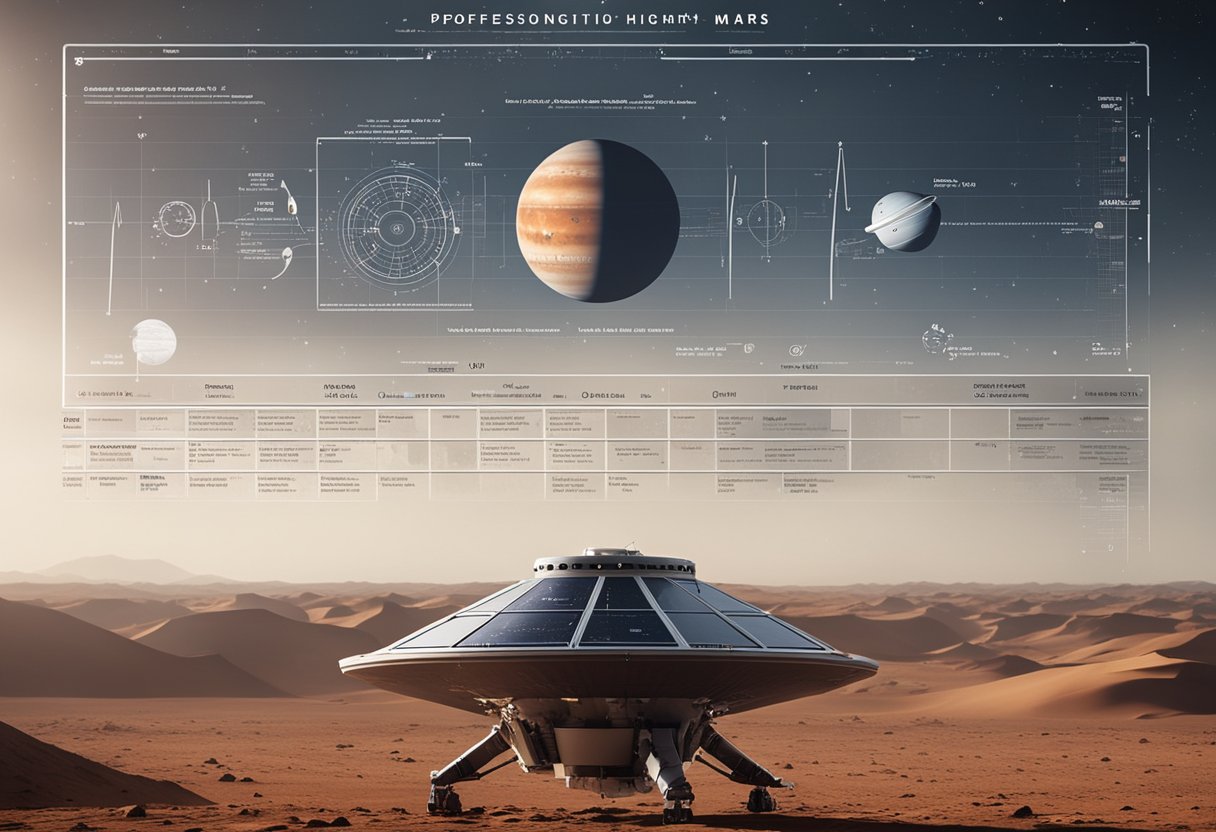
As we embark on the venture of space exploration, understanding the travel time and distance to Mars is crucial for successful missions. Our discussion covers the intricacies of these factors.
Optimal launch windows for missions to Mars are dictated by the relative positions of Earth and Mars in their orbits. We look for a specific alignment known as the Hohmann transfer orbit, which occurs approximately every 26 months. This is when Mars and Earth are positioned in their orbits to allow the most energy-efficient path to the Red Planet.
The journey time to Mars can vary significantly based on the speed of the spacecraft and its chosen trajectory. Typically, travelling to Mars takes about seven months, a period during which a spacecraft covers the distance of roughly 480 million kilometres. Achieving a balance between speed and the amount of fuel carried is a delicate task that influences the total travel time. We might see these times decrease as advancements in propulsion technology are made, but for now, travellers must prepare for a substantial trip.
By adhering to these timelines and leveraging optimal alignment and launch periods, we ensure the most efficient use of resources and the greatest chance of mission success.
In this section, we address some of the most common inquiries regarding the duration of Martian travel and the prospective advancements in space technology that underline our journey to the Red Planet.
The travel time to Mars for unmanned spacecraft can vary but usually takes about six to nine months. This timespan fluctuates due to the relative positions of Earth and Mars along their orbits.
Historically, the quickest missions to Mars, such as the one undertaken by the New Horizons probe, have theoretically proposed the possibility of reaching the Martian surface in as little as 39 days, although practical application of such speed has yet to be implemented for Mars transit.
The round trip to Mars is often cited as nearly two years due to the need to wait for a proper planetary alignment for the return journey, along with the stay on Mars itself, which adds to the total mission duration.
NASA is continuously exploring technological advances for its 2026 Mars mission, focusing on reducing travel time and improving spacecraft capabilities for greater autonomy and efficiency during the journey.
Various space agencies and private companies aim to send astronauts to Mars within the 2030s, with some early coordination and test missions serving as precursors to these ambitious crewed endeavours.
A martian mission spanning three decades would be highly unusual and could only result from a long-term human settlement plan, extended research missions, unforeseen delays, or significant technical and logistical challenges that extend well beyond routine space travel operations.